| HOME |
|---|
LIBRA
The Scales
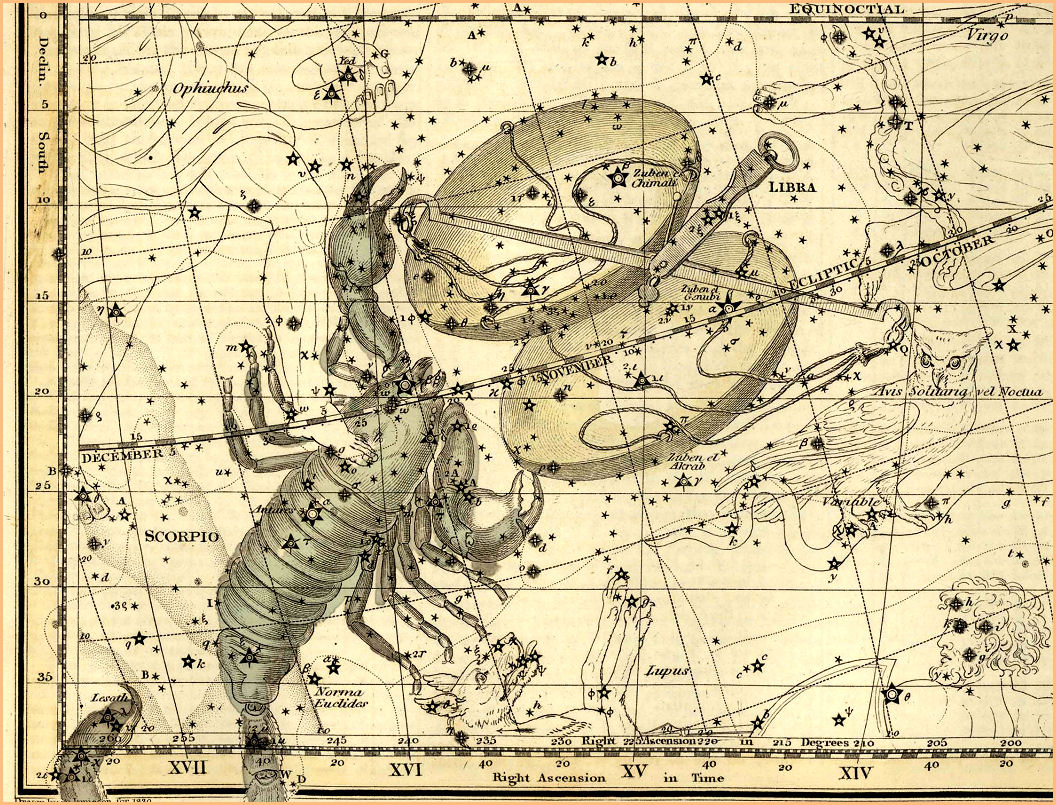
Libra - Celestial Atlas by Alexander Jamieson - 1822
| HOME |
|---|

The constellation Libra was originally part of the constellation Scorpius, and represented the claws of the scorpion. It was the Romans who cut the claws off the scorpion and made them into a new constellation named Libra, which represented the scales of justice. But the original names for the stars stuck, so all the named stars in Libra still refer to the claws of the scorpion.
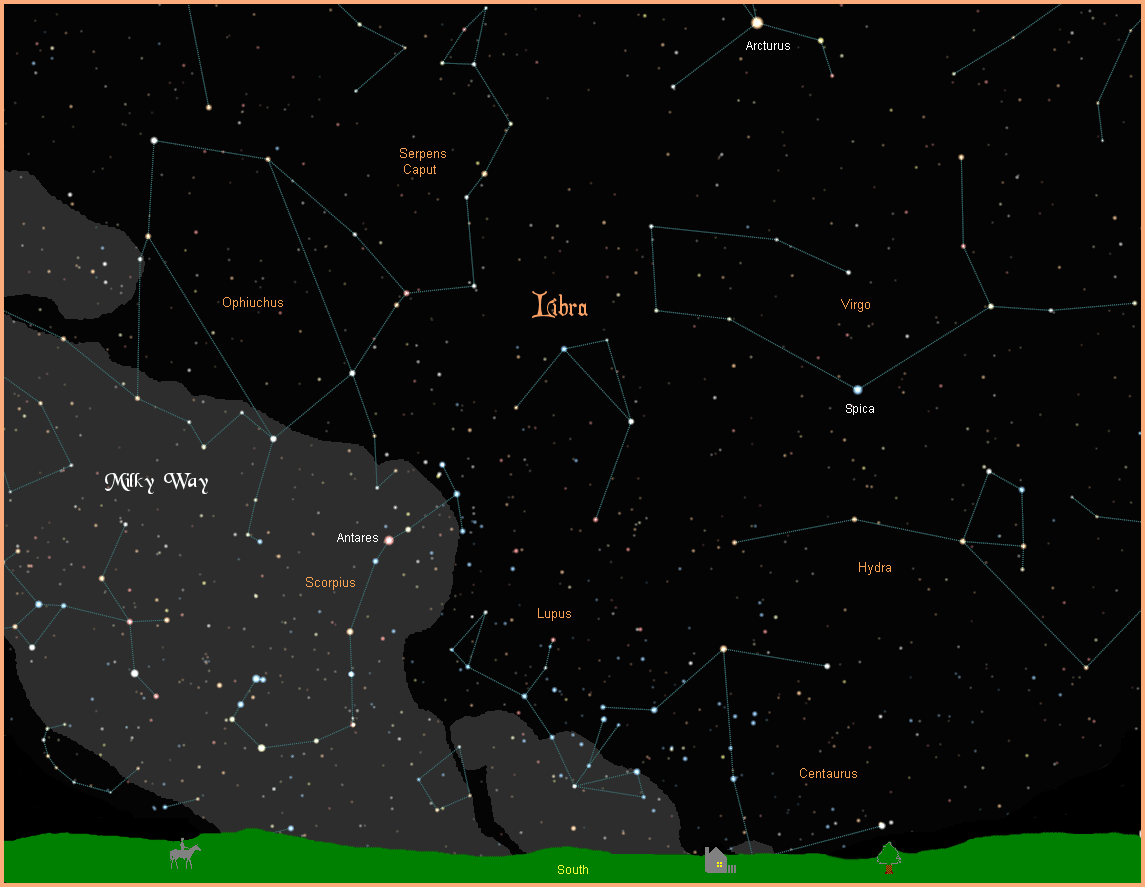
Although afforded the alpha designation, Zuben Elgenubi is technically the dimmer of Libra's two bright stars. Maintaining the ancient Arabic name meaning the southern claw, from a time when the star was a part of Scorpius, it is a complicated multiple star system. The two main components are an F3V yellow/white main sequence star (Alpha-1 - the most westerly, magnitude 5.2), and an A5V white main sequence star (Alpha-2, magnitude 2.7). Both of these stars in turn have close binary companions, resulting in a quadruple star system with a combined magnitude of 2.75, all located about 77 light years away.
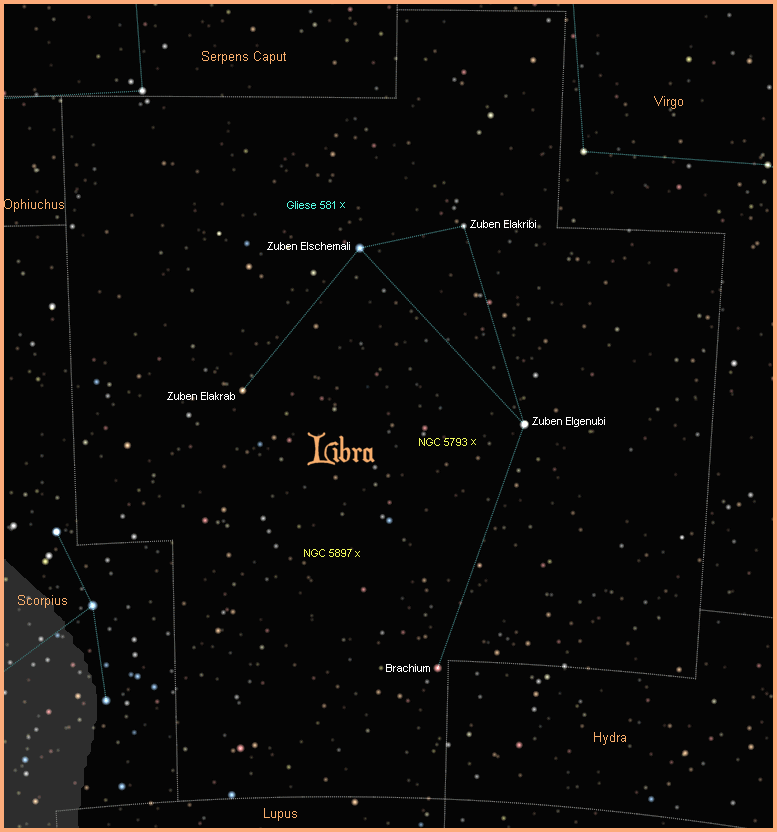
Beta Librae also retains the traditional Arabic name Zuben Elschemali, the northern claw (of the scorpion). It is a B8 blue/white main sequence star, which some observers declare has a greenish hue. From a distance of 160 light years, the star shines with a magnitude of 2.61, making it - by a very small margin - the brightest star in the constellation.
Gamma Librae is Zuben Elakrab, another Arabic term for the scorpion's claw, a G8III yellow/orange giant, 163 light years away with a magnitude of 3.91.
Delta Librae is Zuben Elakribi, yet another reference to the claw of the scorpion, an A0V blue/white main sequence star, 294 light years away with a magnitude of 4.91.
Sigma Librae is Brachium, Latin for arm, an M2III red giant, 289 light years away with a magnitude of 3.29.
Gliese 581 (TYC 5594-1093-1) is a very close star, a trifling 20 light years away, with at least three super Earth planets in orbit around it. The star is an M3V red main sequence star, too dim to see with the naked eye at magnitude 10.57, but very stable and long lived, the perfect type of energy source to foster the evolution of life. Xavier Delfosse, a member of the E.S.O. team of scientists that discovered the planets says, "On the treasure map of the Universe, one would be tempted to mark this with an X".
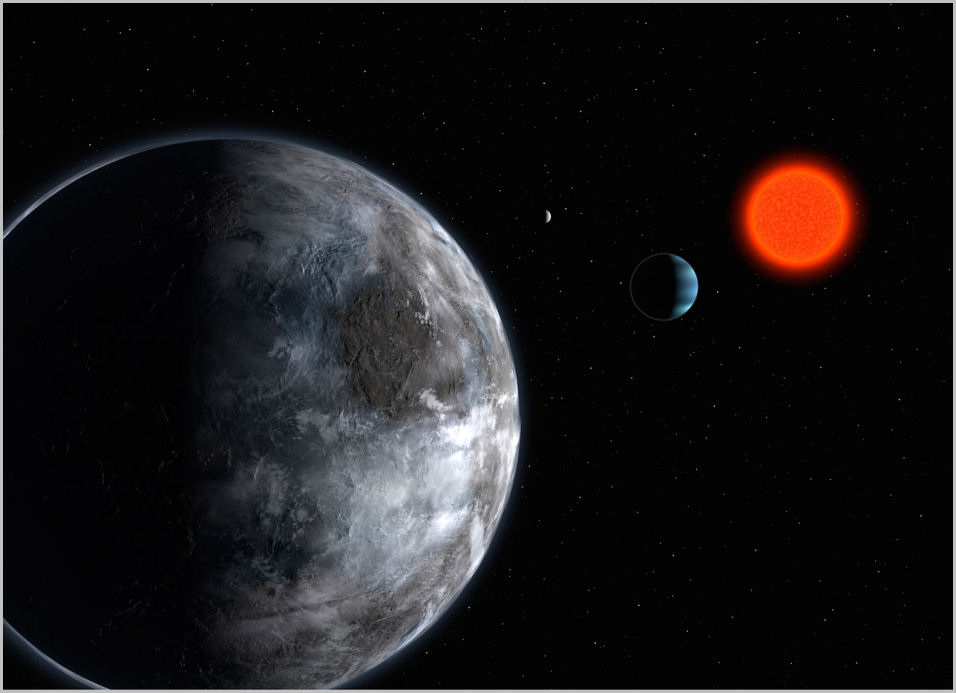
We can imagine what it might be like on a planet around Gliese 581. Instead of the harsh blinding light of a yellow main sequence star like our Sun, 93 million miles away, we would see a much larger, mellow-looking red sun in the sky, only a few million miles away. At that proximity, a planet would move around its sun very quickly, so that a year would last mere days, or weeks. Even though Gliese 581 is one of the closest stars to Earth, only 20 light years away, our very fastest spacecraft travelling 40,000 mph would still take 340,000 years to reach it, so it's fair to say we won't be visiting it any time soon. But we can certainly study it from afar, and you can be sure the wheels and gears of telescopes from all over the world and high above it are turning, and pointing towards Gliese 581.
There are three other stars in Libra that are known to host planetary systems, but the planets are all gas giants and the stars are all very far away and beyond naked eye visibility. For more information on these and other extrasolar planets, visit NASA's New Worlds Atlas, and The Open Exoplanets Catalogue.
The globular star cluster NGC 5897 is located 40,000 light years away. With a magnitude of 8.53, it is a good challenge for a small scope.
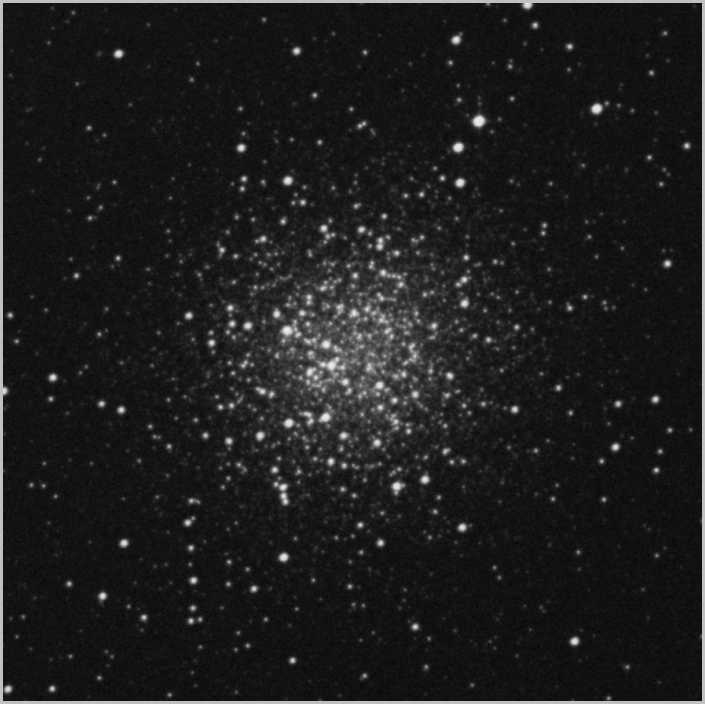
NGC 5793 is about 150 million light years away. It is a Seyfert galaxy with a very bright, active nucleus, and a distinctive band of dark dust. With a magnitude of 13.2, it is accessible only with large telescopes.
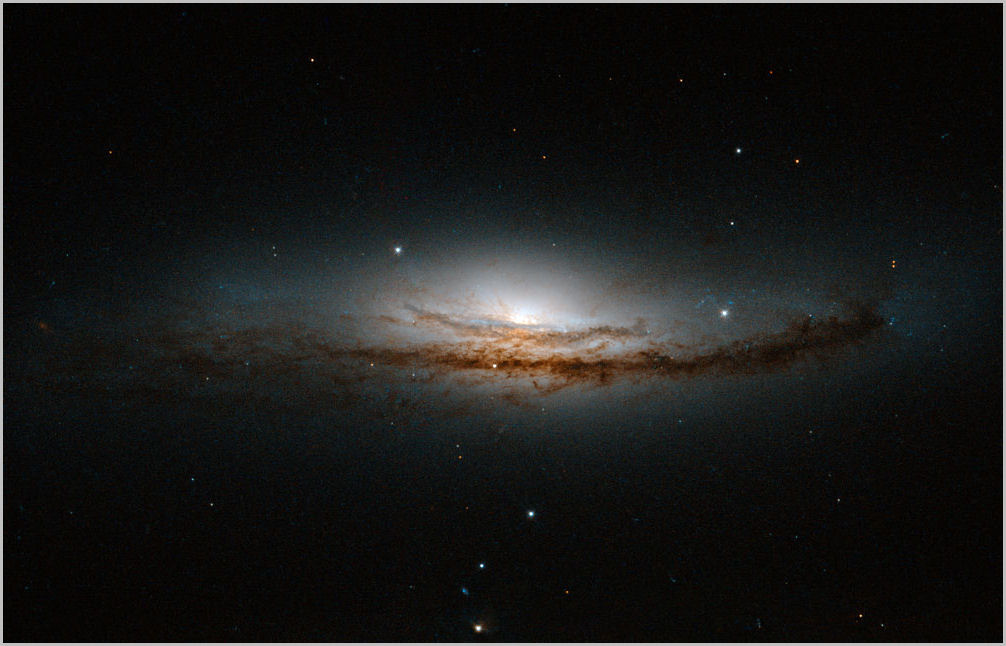
|
|
|
|
|
|